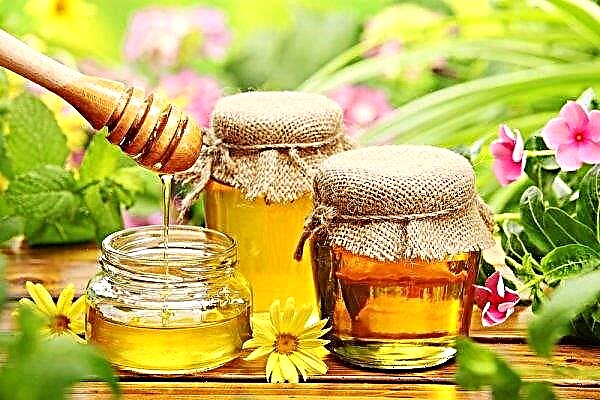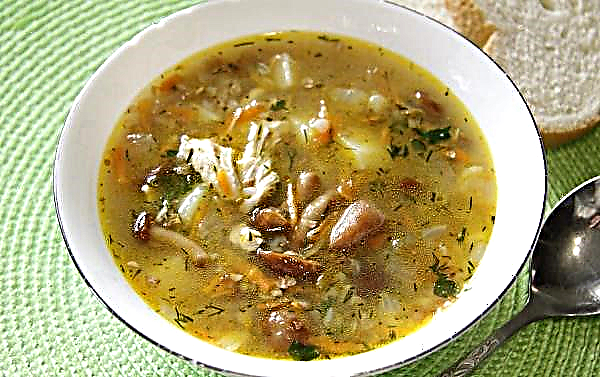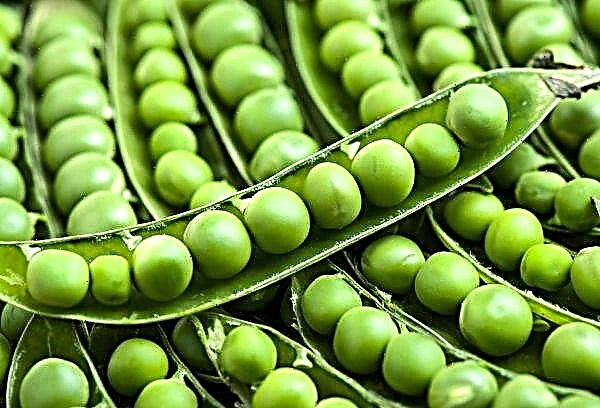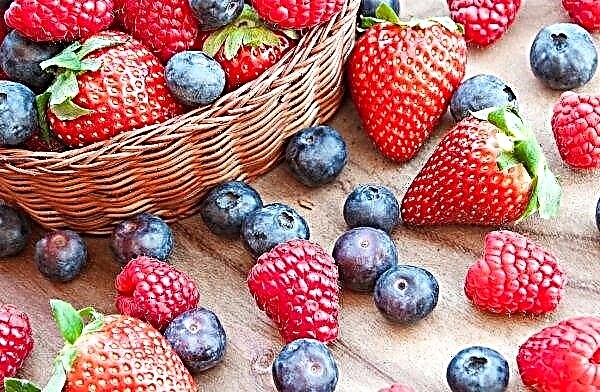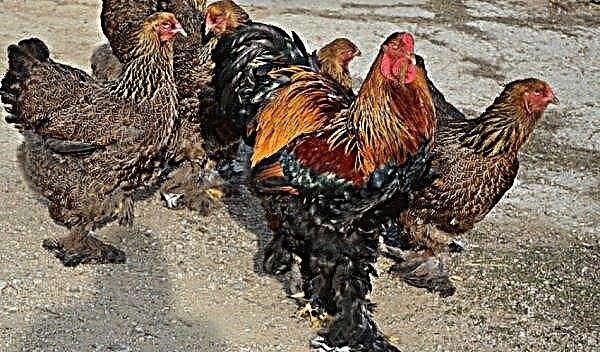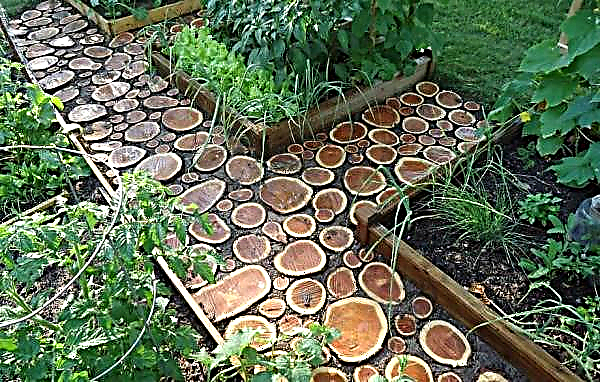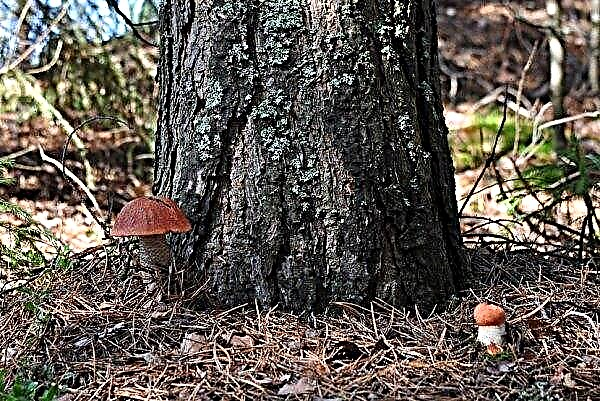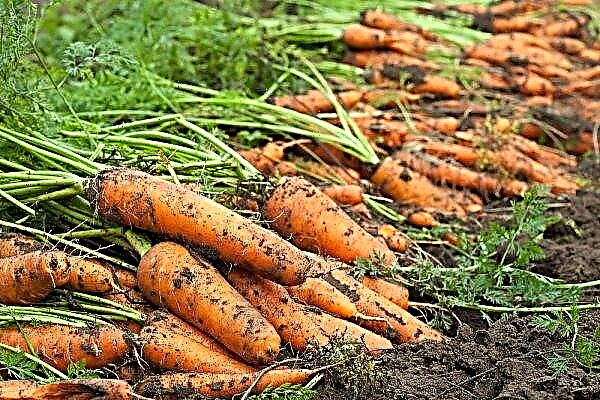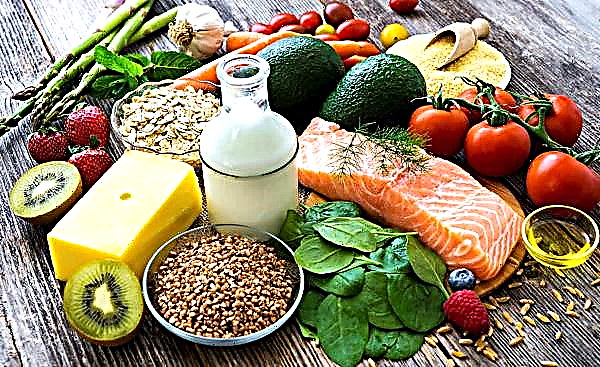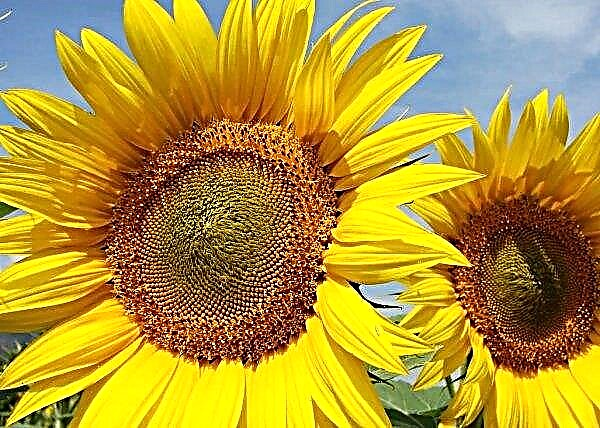Bell pepper is a storehouse of vitamins and a find for those who want to eat not only correctly, but also tasty. The vegetable occupies a leading position due to its taste and vitamin content. Therefore, it is often grown in greenhouses to be able to consume this valuable product all year round.
Growing pepper in a greenhouse
Such a process will be an interesting experience for both beginner gardeners and professional gardeners. Occupation is not difficult, but requires the fulfillment of certain conditions for care. As a result, a rich, high-quality crop will delight any homeowner.
Did you know? In natureThere are more than 1,000 varieties of pepper.
Benefits
- Growing sweet peppers in greenhouses has many advantages over other methods, among them:
- The ability to harvest several times a year.
- An opportunity to grow any grades, even thermophilic.
- Short ripening.
- Increase in crop yield.
- Reducing the risk of insects and most diseases.
Disadvantages
Growing pepper in greenhouses requires the purchase of additional equipment. Today, polycarbonate greenhouses are used more often - light and translucent plastic.

To obtain a good harvest in such greenhouses, it is necessary to additionally equip:
- Lighting devices - the vegetable belongs to photophilous crops, and shortened daylight hours without additional lighting will negatively affect the growth and development of the vegetable.
- Heating system - during the off-season in many greenhouses, additional heating of the room is required, this is especially true for heat-loving varieties of pepper.
- Irrigation system - high-quality watering is one of the factors affecting the final result of the crop. The best option is drip irrigation - modern systems of dosed water supply to the root system of plants.
The best varieties of pepper for a greenhouse
A feature of growing pepper in a greenhouse is the ability to choose almost any variety of this vegetable, including those that could not take root in open ground in a cold climate zone. When choosing a variety, you need to remember that in greenhouses there is an opportunity to plant peppers of immediately early ripe, mid-ripening and late ripe varieties - this will make it possible to continuously harvest.
Of the varieties that are easy to germinate and give a wonderful harvest, they distinguish:
- Bogatyr - has large fruit sizes with thick, juicy walls. The fruit is red, the number of seeds is small. Requires frequent soil fertilization and caution in irrigation.

- Hercules - refers to mid-season varieties and is suitable for year-round cultivation. It has great fruitfulness - about 15 fruits on one bush.
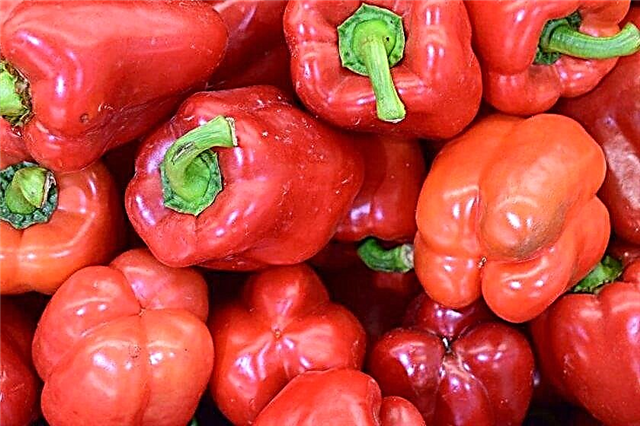
- California Miracle - differs in resistance to diseases and insect pests. It has a high yield - up to 3 kg of fruit from one bush. It has a pronounced, sweet taste.

Many other varieties of peppers receive a lot of positive reviews. The only thing that novice gardeners need to know is that it is not recommended to plant sweet and hot pepper varieties nearby. This will lead to over-pollination, after which hot pepper will lose the brightness of its taste, and sweet pepper will get an unpleasant aftertaste.
Dates of sowing pepper
Due attention is paid to the timing in which the sowing of seeds is carried out. After all, this will affect the further growth and development of the crop.
For the correct timing, you need to consider the variety of pepper grown:
- 60 days to transplant day for early ripening varieties;
- about 75 days for mid-ripening and late-ripening varieties.
It is also necessary to take into account the fact that when diving seedlings, the period of its development will lag by about 10 days.Important! Many gardeners take into account the lunar calendar when sowing, but the fact of the moon’s influence on the growth of planted plants is not scientifically confirmed.
Landing conditions
Consider below the conditions necessary for the growth and development of pepper:
Take a closer look

- When planting pepper, you need to remember that this is a heat-loving plant, which means that the air temperature should be at least +10 ° C. To provide heat for the beds, hay, branches and grass (about 30 cm deep) are pre-buried in the soil - this procedure is carried out in late autumn, provided that the planting is carried out in the spring.
- A day before planting seedlings, the soil is deeply dug up and fertilized - saltpeter, humus, ash are suitable for such purposes.
- Pepper refers to crops that are susceptible to both a deficiency and an excess of moisture. It is important to ensure that the air in the greenhouse is not dry - in this case, even if watering the plants is sufficient, the sprouts will grow small, and the crop will be small and not juicy and tasty. The ideal humidity in the greenhouse is 60–70%.
- The vegetable has clear soil requirements: in addition to good air and moisture permeability, as well as soil temperature of at least +15 ° C, the soil should not have a high content of acids and salts. Good soil is considered to contain humus.
- It is forbidden to plant pepper in the soil in which tomatoes were grown before. It is better if the planted seedlings are in the last year's place of cabbage, or cucumbers.
- An important factor in obtaining a high yield is good and constant lighting in the greenhouse. It is recommended to illuminate the seedlings after planting for 12 hours a day: the best option is fluorescent lamps. An indicator of the lack of lighting are long and pale sprouts of seedlings.

Sowing preparation
Preparing seeds for sowing plays an important role in the further process of growing pepper in greenhouses. It is at the seed stage that future pepper bushes can be used for endurance to changes in ambient temperature, resistance to diseases and insect pests, and the foundation for high and high-quality yields.
Did you know? India is recognized as the birthplace of pepper, and the first mention of this culture was made more than 3,000 years ago.
Seed treatment
The procedure for treating seeds before sowing is not mandatory, but it makes it possible to increase the expected yield and plant endurance.

Therefore, before sowing, pepper seeds are processed as follows:
- Calibrate. Seeds are poured into a container with saline. Surfaced to the surface are considered empty, or in the future giving weak sunrises, they are not used in sowing. Experienced gardeners carry out a calibration procedure by eye - this method requires skill.
- The procedure for the disinfection of seeds and their nutrition. Disinfection (soaking seeds for half an hour in a weak solution of potassium permanganate followed by thorough washing) is intended for manually collected seeds, purchased do not need to be disinfected. Nutrition of seeds occurs by soaking in nutrient solutions that you can buy or cook yourself. Soaking time is specified in the instructions for the finished solution or lasts for several hours in case of self-preparation of the solution. Before immersion in the solution, the seeds are placed in a gauze bag. After processing, they are washed and dried well.
- After carry out the germination of grains. This procedure will allow you to evaluate the ability of the seeds to ascend and further accelerate the appearance of the first shoots. To do this, put gauze or cotton cloth or foam rubber in a saucer with water, on which grains are placed and placed in a warm place for 3–7 days. Seeds that have not sprouted during this period of time are rejected.
- For hardening future plants and their resistance to temperature changes, before sowing, pepper seeds are placed in the refrigerator for several days.
Soil preparation
The crop reacts sharply to the chemical composition of the soil and to the quantity and quality of fertilizer applied. On the right soil depends half the success in the end. A loamy or sandy loamy soil with a humus content, with an extensive chemical composition but not oversaturated with nitrogen, is considered to be the best substrate for planting peppers. A pH of 6–6.5 is considered to be a sufficient acidity composition in the soil. For seedlings, a pH of 6.8 is allowed. If the acidity is lower than 6, the soil is enriched with chalk, slaked lime or tuff. It is recommended to analyze the soil and to clarify the missing trace elements in it, and therefore for the correct selection of fertilizers. It is also useful to add wood ash to ready-made dressings, which is an excellent fertilizer and protects plants from pests and diseases.
It is recommended to analyze the soil and to clarify the missing trace elements in it, and therefore for the correct selection of fertilizers. It is also useful to add wood ash to ready-made dressings, which is an excellent fertilizer and protects plants from pests and diseases.
The technology of sowing and growing seeds for seedlings
For the correct sowing of pepper use the following technology:
- already sprouted seeds with tweezers are laid in the soil previously watered with warm water, at a distance of 1.5–2 cm from each other so that the grown seedlings do not obscure each other;
- from above the seeds are covered with a soil layer of 1.5 cm, watered (this must be done carefully, in order to avoid leaching of seeds from the soil);
- to increase humidity, the container with planted seeds is closed with polyethylene, and the ambient temperature should not be lower than +25 ° С.
Usually on the 5-7th day the first sprouts appear. It was then that the seedlings were placed in a bright room with an air temperature of +15 ... + 17 ° C, systematically but moderately, pouring it with warm water. Planting seedlings in the ground is possible after the appearance of the first buds and at an ambient temperature of at least +15 ° C.
When growing peppers in a greenhouse, you may encounter problems such as:
Care Features
Most of the work done is left behind - and here is a bush of peppers. There is little left to receive the first fruits, and the main thing at this stage is to continue to properly care for the plant in order to receive a reward in the form of a good crop.
Feeding and watering
Pepper is a moisture-loving crop, but too much water will not do him any good. Therefore, water the vegetable once a week. A lack of moisture will appear as brown spots on the leaves. 
An important process for the growth and development of a plant is top dressing, which is applied 2-3 times. The most useful and popular components of bait in the process of growing seedlings are urea and superphosphate.
The first top dressing is done 3 weeks after the first leaves appear on the stem. For this, 6–7 g of urea and 30 g of superphosphate are dissolved in 10 l of water. The second time top dressing is carried out several days before transplanting seedlings into the soil. Such care is guaranteed to bear fruit and give a wonderful harvest.
Bush formation
The formation of a bush is not a mandatory procedure for all varieties of peppers: weakly branching varieties and hybrids do not need such a procedure. In undersized varieties of peppers (up to 70 cm), weak and sterile shoots are pruned. Thick bushes of tall varieties (up to 200 cm) are an ideal environment for the development of diseases.  Such bushes need ventilation, lighting and nutrition, for this they need to thin out. This is called the formation of a bush - cutting unnecessary shoots and pinching leaves.
Such bushes need ventilation, lighting and nutrition, for this they need to thin out. This is called the formation of a bush - cutting unnecessary shoots and pinching leaves.
Pests and diseases of pepper
This crop is susceptible to numerous diseases that, if overlooked and untreated, can lead either to loss of crop or to the death of the plant itself.
Among the common diseases noted:
- Late blight - found in the form of brown spots and drying leaves. Within two weeks, it can affect the entire plant, including the fruits. To prevent crop loss, having discovered the first signs, the beds are treated with drugs: "Alirin-B", "Fitosporin-M", "Gamair".
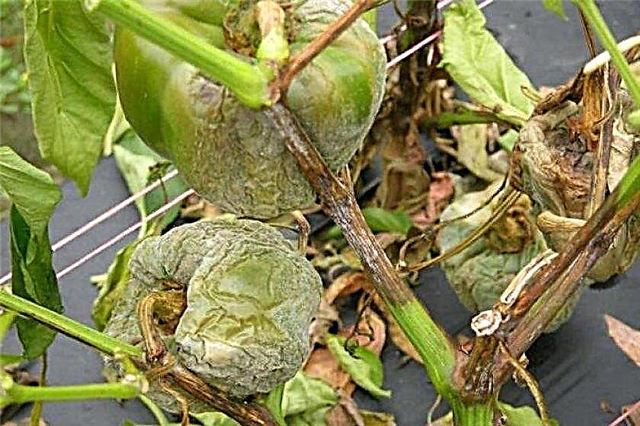
- Gray rot - a sign are gray spots at the bottom of the stem, near the ground itself. Sick plants are removed from the beds and transplanted into a separate container, and the soil is treated with special preparations, including: Skor, Acrobat Ordan, Fundazol.

- Gray leg - It is often dangerous for seedlings and plants grown in the greenhouse. It is expressed as the decay and drying of the bush, often accompanied by a color change at the bottom of the stem to red (brown) color.

- Tobacco Mosaic - characterized by the appearance of a marble pattern on a sheet of pepper, due to the penetration of bacteria into the plant and the destruction of chlorophyll. Only prevention of disinfection of seedlings and soil will save from this disease.

Insects can also cause damage to plants. Aphids are a common and dangerous pest. The reproduction rate is huge, therefore, at the first signs of aphids, pepper bushes are treated with working solutions (Karbofos or Keltan).
The spider mite, which is located in the lower part of the stem and eats the juice of pepper fruits, causes great harm to plants. A solution is used to fight: in a bucket of water for several hours, insist 1 cup of chopped green onion, mixed with 1 tablespoon of soap and 1 cup of dandelions. Often on the stems and leaves there are slugs bare - they eat plants and can cause tremendous damage. For disposal, use the drug "Arrow" in the ratio of 50 g of the drug per 1 bucket of water.Important! Such a virus has a high resistance to survival and can persist in the soil up to 5 years.
Harvest Dates
Depending on the expected storage time, choose the harvest date. Usually, the first formed, but not fully ripened fruits can be removed after 60 days from the period of pepper planting in the ground. 
This form of harvest readiness is called technical ripeness; it is used for long-term storage of fruits in ventilated spacious drawers with a well-closed lid. A crop that has reached the expected color and shape is called biologically mature.
The shelf life of such a crop is much shorter, but the fruits are immediately edible. To grow and get a high-quality crop of pepper in large quantities is not such a simple task, requiring time and attention. But all efforts will be rewarded by the presence of juicy, sweet fruits that complement any dish.








